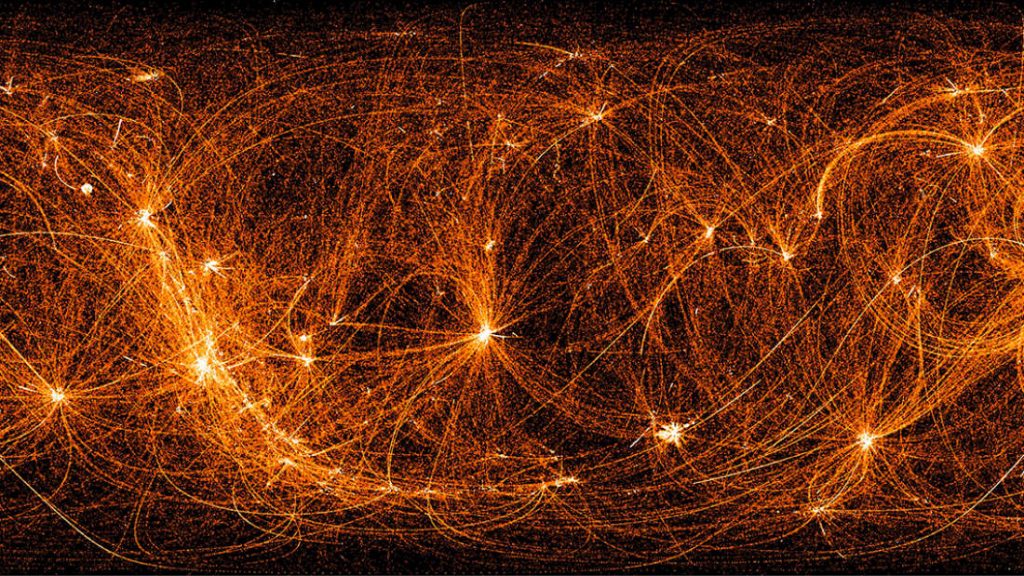Onboard the International Space Station (ISS), there is a fantastic experiment that is trying to understand what goes on inside neutron stars. The Neutron Star Interior Composition Explorer, or NICER, collects the X-ray light emitted by these and many other objects in the cosmos.
Researchers have now released an image of the first 22 months of observations in the form of a “map of the entire sky in X-rays”, and it’s stunning.

The beautiful image is full of loops, arcs, and bright spots. As the NICER detector swoops across the sky, it captures the emission of X-rays (and the occasional high-energy cosmic ray) from these sources and as well as the diffuse X-ray background. The prominent arcs are formed because the observatory often follows the same path as it goes from one target to the next.
The device works only during the ISS’s “nighttime,” when the orbiting station moves behind the Earth and is shielded from the Sun. This happens up to eight times a day, as the ISS circles our planet every 93 minutes or so.
“We’re gradually building up a new X-ray image of the whole sky, and it’s possible NICER’s nighttime sweeps will uncover previously unknown sources,” Keith Gendreau, the mission’s principal investigator at NASA’s Goddard Space Flight Center, explained. “Even with minimal processing, this image reveals the Cygnus Loop, a supernova remnant about 90 light-years across and thought to be 5,000 to 8,000 years old.”

What are neutron stars?
Neutron stars are the extremely dense remnant of a supernova. They are between 10 to 20 kilometers across (6 to 12 miles) but weigh more than the Sun. As an example of their mind-boggling density, a teaspoon of neutron star material weighs hundreds of million tons.
And their sound is just terrific:
Researchers have theories about how matter might be arranged inside these extreme objects. They think that the way neutrons are compressed together in these objects makes them the strongest material in the universe. They also think that the way these materials are distributed looks a bit like spaghetti, gnocchi, and lasagna sheets, so they have allocated the term “nuclear pasta” to describe them.
The data collected by NICER will be used to determine the true size of these neutron stars with an error of no more than 5 percent. This will give important insights on what form matter might take inside these objects.
Space will never stop to amaze us! Here some mysterious sounds from space.
[NASA]











